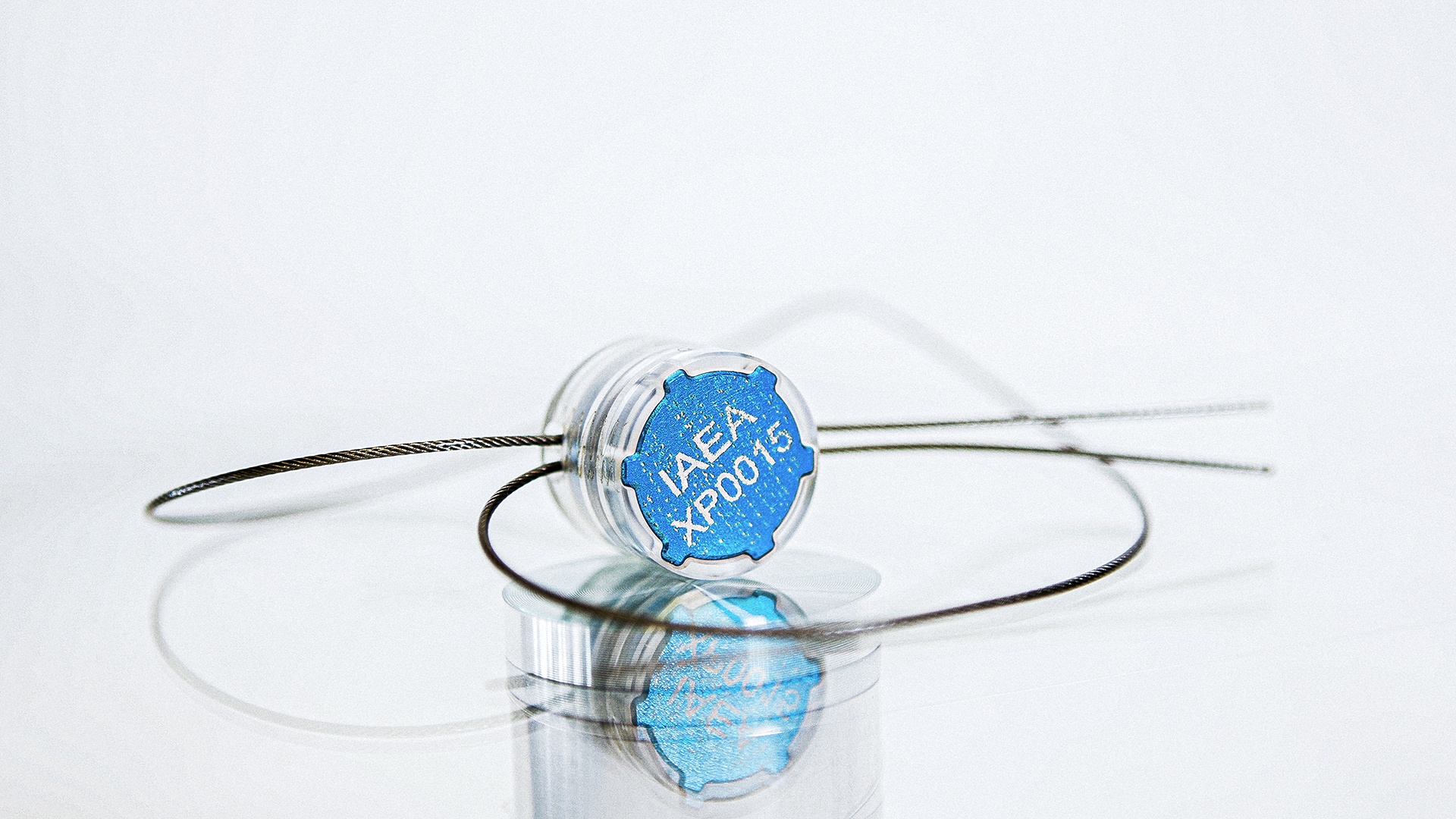One of the main tools that IAEA inspectors use to detect the diversion and misuse of nuclear material and technology comes in the form of a device no larger than a coin. This small but mighty instrument is called a passive seal. With it, an IAEA safeguards inspector can close a container, a hatch to a room or a nuclear material cask, and return years later to verify whether it was opened. In 2021, the IAEA verified over 17 000 passive seals applied to nuclear material, facility critical equipment or IAEA monitoring and other equipment at nuclear facilities.
“Seals are a simple and effective means to meet an important verification need. Used around the world, metal seals are an important part of an inspector’s toolkit when verifying that nuclear material and facilities remain in peaceful use,” said Joel Hoyt, seals modernization project lead and Senior Project Engineer at the IAEA.
A passive seal ensures continuity of knowledge regarding nuclear material. If the seal has not been tampered with, the inspector knows that the integrity of the equipment or material it encloses is still intact. A passive seal is also used to ensure the integrity of the IAEA’s on-site verification tools and equipment, such as surveillance cameras.
The traditional passive seal, used since the 1960s, is a copper and brass device called the E-CAP metal seal (CAPS). CAPS is a general purpose, non-reusable passive loop seal. To close the seal, a double copper cap is snapped onto the base. Both the cap and its base have unique markings on the inside surface to ensure the authenticity of the seal. The metal base and its cap serve as the point of closure with a multistranded wire threaded between them. This wire encircles the item to be sealed. After an inspector confirms that the wire and the sealed enclosure have not been tampered with, they cut the wire and bring the seal, base and wire to the IAEA’s Headquarters for verification.

